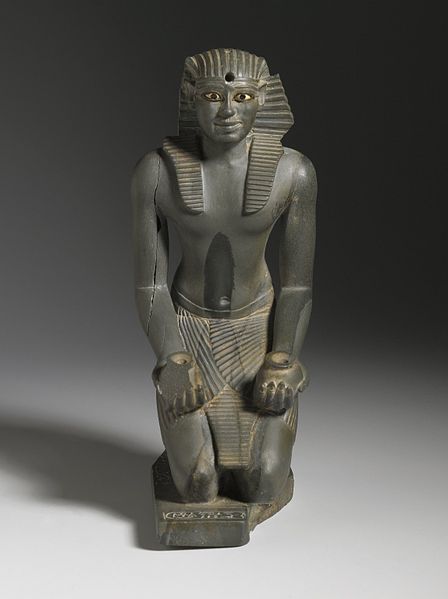Hor-Aha is considered the second pharaoh of the First Dynasty of Egypt by some Egyptologists, while others consider him the first one and corresponding to Menes. He lived around the 31st century BC and is thought to have had a long reign.
Faience vessel fragment with serekh inscribed with the Horus-name "Aha", on display at the British Museum.
Mastaba attributed to Neithhotep which is believed to have been built by Hor-Aha.
Hor-Aha's tomb comprises three chambers B10, B15 and B19, shown in inset. B14 could be the tomb of Hor-Aha's wife Benerib.
Cylinder vessel of Hor-Aha from Saqqara, First Dynasty; Museum August Kestner.
Pharaoh is the vernacular term often used for the monarchs of ancient Egypt, who ruled from the First Dynasty until the annexation of Egypt by the Roman Republic in 30 BCE. However, regardless of gender, "king" was the term used most frequently by the ancient Egyptians for their monarchs through the middle of the Eighteenth Dynasty during the New Kingdom. The earliest confirmed instances of "pharaoh" used contemporaneously for a ruler were a letter to Akhenaten or an inscription possibly referring to Thutmose III.
The Mask of Tutankhamun from tomb KV62 in the Valley of the Kings. Pharaohs' tombs were provided with vast quantities of wealth
A guardian statue wearing the red crown which reflected the facial features of the reigning king, probably Amenemhat II or Senwosret II, and which functioned as a divine guardian for the imiut. Made of cedar wood and plaster c. 1919–1885 BCE
Uraeus depicted on king Den, ivory label found at his tomb in Abydos, c. 3000 BCE, British Museum, London
Statuette of Pepy I (c. 2338-2298 BCE) wearing a nemes headdress Brooklyn Museum, New York








